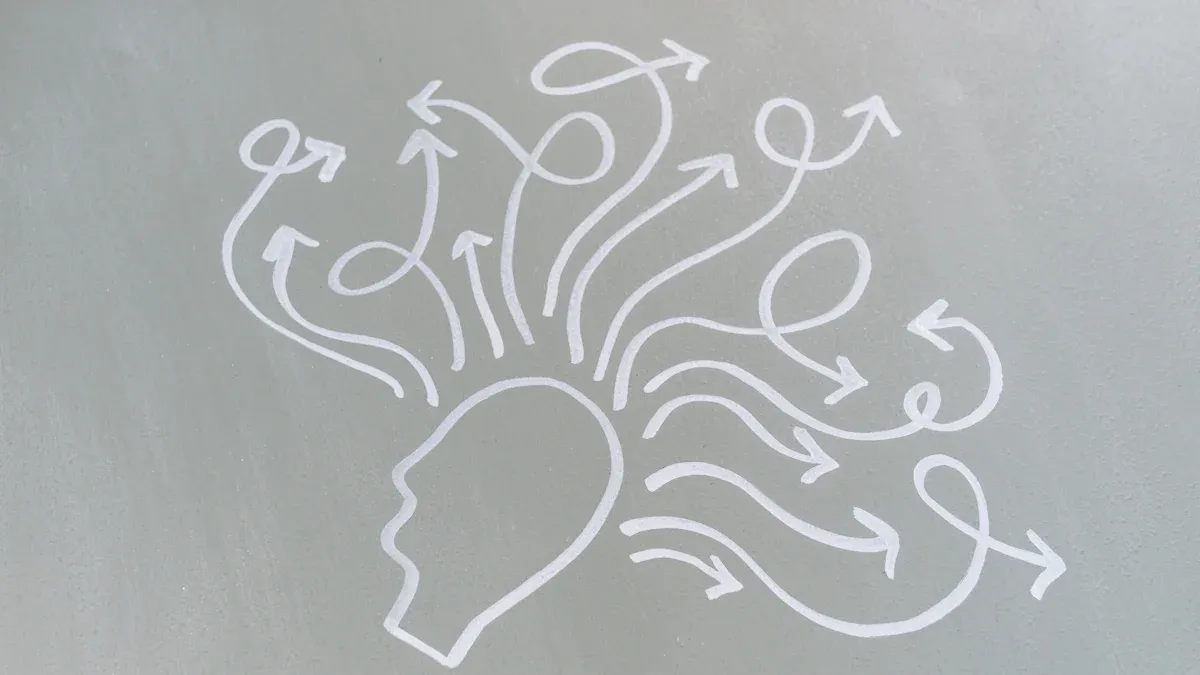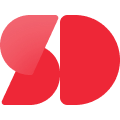How to Identify Bottlenecks with Path & Goal-Flow Analysis

Bottlenecks act as roadblocks in workflows, slowing processes and reducing efficiency. These constraints can lead to significant losses. For instance:
Order processing times can spike by 312% during busy periods.
Revenue losses reach $3.4 million per quarter due to transaction failures.
Employee productivity drops by 24% when workarounds are required.
Path and goal-flow analysis help you identify bottlenecks by visualizing workflows and uncovering inefficiencies. Addressing these issues improves productivity and enhances customer satisfaction. Manufacturers using automated workflows have reduced delays by 42%, showing how critical it is to resolve bottlenecks effectively.
Key Takeaways
Bottlenecks slow things down and hurt work and profits. Finding them is key to working better.
Path and goal-flow analysis shows workflows clearly. This helps find problems and match tasks to goals.
Checking workflows often and gathering data shows patterns and delays.
Fixing people, system, and communication issues can boost work and happiness.
Using automation tools and mapping software makes work faster and smoother. It also cuts mistakes and keeps things running well.
Understanding Path & Goal-Flow Analysis

Defining Path Analysis
Path analysis helps you understand the relationships between different variables in a process. It goes beyond traditional linear regression by incorporating latent variables and mediation techniques. This approach allows you to test hypotheses and refine causal relationships. For example:
It eliminates insignificant pathways, helping you focus on impactful connections.
It uses goodness-of-fit tests to validate refined models against null hypotheses.
Path analysis is theory-driven, requiring you to define causal relationships before testing. By doing so, you can identify bottlenecks and streamline workflows effectively.
Defining Goal-Flow Analysis
Goal-flow analysis focuses on how well processes align with specific objectives. It evaluates whether workflows enable you to achieve desired outcomes efficiently. Research supports its effectiveness:
Study/Source | Findings |
|---|---|
Hey & Pietruschka (1998) | Over 90% of Goal Setting Theory studies confirm a positive effect on achieving flow. |
Rheinberg et al. (2007) | Clear goals significantly increase the likelihood of achieving 'flow' at work, improving performance. |
By mapping goals and analyzing flow, you can pinpoint areas where processes deviate from objectives. This insight helps you optimize workflows and improve performance.
Benefits of Path & Goal-Flow Analysis in Identifying Bottlenecks
Path and goal-flow analysis offer several advantages for identifying bottlenecks:
Improvement Area | |
|---|---|
Conversions | Quantified impact on conversion rates |
Revenue | Measured revenue changes due to experiences |
User Behavior | Insights into user interactions and events |
High-Impact Improvements | Prioritization based on data-driven insights |
These methods allow you to visualize workflows, detect inefficiencies, and prioritize improvements. For instance, organizations using these techniques have reported increased productivity, reduced costs, and enhanced customer satisfaction. By addressing bottlenecks, you can achieve measurable results in both financial and operational performance.
How to Identify Bottlenecks Using Path & Goal-Flow Analysis
Visualizing the Workflow
Creating a visual representation of your workflow is one of the most effective ways to identify bottlenecks. By mapping out each step in a process, you can see how tasks flow from one stage to the next. This approach makes it easier to spot inefficiencies or delays.
Visual tools like flowcharts, process diagrams, and Gantt charts simplify complex workflows. They allow you to focus on key areas where problems might occur. For example:
Enhanced Clarity: Visuals break down intricate data, helping you and your team identify trends and patterns.
Improved Engagement: Clear visuals encourage collaboration, making it easier to discuss potential bottlenecks.
Faster Insights: Visual tools speed up data analysis, enabling you to address issues quickly.
When you visualize workflows, you create a shared understanding among team members. This shared perspective fosters better communication and helps you pinpoint areas that need improvement.
Mapping Goals and Key Process Steps
Mapping goals and key process steps ensures that every part of your workflow aligns with your objectives. Start by defining the primary goals of your process. Then, break down the workflow into smaller steps that contribute to these goals.
This method helps you identify where delays or inefficiencies occur. For instance:
Process mapping allows you to visualize workflows step-by-step, making bottlenecks easier to detect.
Metrics like cycle time, throughput, and queue length highlight inefficiencies and congestion.
Combining employee feedback with data analytics improves your chances of achieving sustainable process improvements.
By aligning each step with your goals, you can ensure that your workflow remains efficient and focused. This alignment not only helps you identify bottlenecks but also improves overall productivity.
Collecting and Analyzing Data
Data collection and analysis are critical for identifying bottlenecks. Start by gathering data from your workflow processes. This data might include task completion times, resource usage, or error rates. Once collected, analyze the data to uncover patterns and trends.
Statistical methods play a key role in this analysis. Techniques like descriptive statistics, regression analysis, and predictive modeling help you interpret data and forecast trends. For example:
Method | Purpose |
|---|---|
Descriptive Statistics | Summarizes and describes the main features of a dataset. |
Inferential Statistics | Makes predictions about a population based on a sample. |
Regression Analysis | Identifies relationships between variables to predict outcomes. |
Predictive Modeling | Forecasts future outcomes using historical data. |
These methods allow you to extract valuable insights from your data. For instance, regression analysis can reveal how specific variables impact workflow efficiency. Predictive modeling can help you anticipate future bottlenecks and take proactive measures to address them.
By combining data analysis with visual tools and goal mapping, you can identify bottlenecks effectively. This approach ensures that your workflow remains optimized and aligned with your objectives.
Detecting Patterns and Pinpointing Constraints
Once you have visualized your workflow and collected data, the next step is to detect patterns and pinpoint constraints. Patterns reveal recurring issues, while constraints highlight specific areas where processes slow down or fail. By focusing on these, you can identify bottlenecks and take corrective action.
Look for Recurring Delays
Start by examining your data for tasks that consistently take longer than expected. These delays often indicate inefficiencies or resource shortages. For example:
Tasks with Long Completion Times: Identify steps where employees or systems struggle to keep up.
Frequent Backlogs: Look for stages where work piles up, causing delays downstream.
Repeated Errors: Pay attention to tasks with high error rates, as they may require rework or additional oversight.
Recurring delays often signal deeper issues, such as outdated tools, unclear instructions, or insufficient training. Addressing these root causes can significantly improve your workflow.
Analyze Workflow Dependencies
Dependencies between tasks can create bottlenecks when one step relies on the completion of another. Use your workflow map to trace these connections. Ask yourself:
Are there tasks that frequently block others?
Do certain steps depend on limited resources or specific individuals?
Are approvals or reviews causing unnecessary delays?
By analyzing dependencies, you can identify constraints that disrupt the flow of work. For instance, if a single team member handles all approvals, consider delegating this responsibility to reduce delays.
Use Data Visualization Tools
Data visualization tools can help you spot patterns and constraints more easily. Charts, heatmaps, and dashboards provide a clear view of your workflow's performance. For example:
Heatmaps: Highlight areas with the highest concentration of delays or errors.
Bar Charts: Compare task completion times across different stages.
Dashboards: Offer real-time insights into workflow efficiency.
These tools make it easier to interpret complex data and focus on high-impact areas.
Tip: Use color coding in your visualizations to quickly identify problem areas. Red might indicate delays, while green shows smooth progress.
Validate Findings with Stakeholders
After detecting patterns and constraints, validate your findings with team members. They can provide context for the issues you’ve identified and suggest practical solutions. For example:
Employees might explain why certain tasks take longer than expected.
Managers could highlight resource limitations or policy constraints.
IT teams might identify system-related issues affecting performance.
Collaborating with stakeholders ensures that your analysis is accurate and actionable. It also fosters a sense of ownership, encouraging everyone to contribute to process improvements.
By systematically detecting patterns and pinpointing constraints, you can identify bottlenecks and develop targeted solutions. This approach not only improves efficiency but also enhances overall productivity.
Common Types of Bottlenecks and How to Address Them

Performer-Based Bottlenecks
Performer-based bottlenecks occur when individuals or teams struggle to complete tasks efficiently. These bottlenecks often stem from limited skills, insufficient training, or an overwhelming workload. For example, a single employee handling multiple critical tasks may delay the entire workflow.
To address performer-based bottlenecks, focus on these strategies:
Redistribute Workloads: Balance tasks among team members to prevent overburdening individuals.
Provide Training: Equip employees with the skills they need to perform tasks more effectively.
Automate Repetitive Tasks: Use automation tools to reduce manual work and free up time for high-value activities.
Long-term bottlenecks caused by performer-related issues can significantly impact growth. According to industry data:
Type of Bottleneck | Percentage Impact on Growth |
|---|---|
Long-term bottlenecks | |
Short-term bottlenecks | 47.2% |
By identifying bottlenecks related to performance and implementing these solutions, you can improve efficiency and reduce delays.
System-Based Bottlenecks
System-based bottlenecks arise when tools, processes, or infrastructure fail to support workflow demands. These bottlenecks can include outdated software, limited physical resources, or restrictive policies. For example, a hospital may experience delays due to insufficient nurse capacity or noncompliance with regulations.
Common system-based bottlenecks include:
Type of Bottleneck | Description |
|---|---|
Bottlenecks in care processes, such as limited workload capacity for nurses. | |
Non-Physical Constraints | Noncompliance with rules, regulations, or policies that hinder workflow. |
Temporary Bottlenecks | Unexpected issues, like sudden changes in a patient’s condition, affecting workflow efficiency. |
Persistent Bottlenecks | Ongoing issues, such as staff shortages, leading to reduced process efficiency over time. |
To resolve system-based bottlenecks, consider these approaches:
Upgrade Technology: Invest in modern tools and software to streamline processes.
Optimize Resource Allocation: Ensure resources are distributed effectively to meet workflow demands.
Review Policies: Identify and revise outdated regulations that slow down operations.
Addressing system-based bottlenecks enhances workflow performance and ensures processes run smoothly.
Communication and Coordination Bottlenecks
Communication and coordination bottlenecks occur when teams fail to share information or collaborate effectively. These bottlenecks are common in large organizations, where silos and dependencies can disrupt workflows. For instance, a study of a FinTech company revealed challenges in managing dependencies among nine teams using seventeen coordination mechanisms.
Other findings highlight the impact of poor communication:
Analysis of over 100 million emails and 60 million calendar entries in a company with 100,000 employees showed a lack of communication across business units, functions, and locations.
Persistent silos hinder collaboration and create bottlenecks in organizational processes.
To overcome communication and coordination bottlenecks, implement these strategies:
Encourage Cross-Team Collaboration: Use tools like shared dashboards and project management software to improve visibility.
Streamline Communication Channels: Reduce reliance on email and adopt real-time messaging platforms for faster communication.
Foster a Collaborative Culture: Promote open communication and teamwork to break down silos.
Improving communication and coordination helps you identify bottlenecks and ensures workflows remain efficient and aligned with organizational goals.
Tools and Techniques to Enhance Bottleneck Identification
Process Mapping Software
Process mapping software simplifies the visualization of workflows, making it easier for you to identify bottlenecks. These tools allow you to create detailed flowcharts and diagrams that highlight inefficiencies in real-time. Unlike traditional methods, process mapping software offers several advantages:
Metric | Process Mapping Software | Traditional Methods |
|---|---|---|
Usability | Intuitive interfaces, easier adoption | May have a steep learning curve |
Collaboration Features | Real-time multi-user access, version control | Limited collaboration capabilities |
Integration | Seamless integration with CRM, ERP systems | Often requires manual updates |
Automation | Automates processes, reducing manual errors | Manual mapping and execution |
Analytics | Provides insights for continuous improvement | Lacks built-in analytics |
For example, tools like Bizagi not only automate workflows but also integrate with CRM systems to identify customer journey friction points. Real-time collaboration features further enhance team productivity, ensuring everyone stays aligned. By adopting process mapping software, you can streamline operations and reduce inefficiencies.
Key Performance Indicators (KPIs) for Bottleneck Detection
Tracking KPIs helps you measure workflow performance and detect bottlenecks effectively. Focus on metrics like cycle time, throughput, and error rates to pinpoint areas of concern. For instance:
Cycle Time: Measures how long it takes to complete a task or process.
Throughput: Tracks the number of tasks completed within a specific timeframe.
Error Rates: Identifies steps prone to mistakes, which may require rework.
The Congestion and Bottleneck Identification (CBI) tool demonstrates the power of KPIs. It uses measures like total vehicle delay and the Bottleneck Intensity Index (BII) to analyze traffic bottlenecks. By visualizing data through tools like the Annual Reliability Matrix (ARM), you can gain a deeper understanding of delay intensity and variability. Applying similar KPI-driven approaches to your workflows can help you prioritize and resolve bottlenecks efficiently.
Workflow Automation Tools
Workflow automation tools eliminate repetitive tasks and streamline processes, reducing the likelihood of bottlenecks. These tools address common inefficiencies:
Automation Solution | |
|---|---|
Manual Data Entry | Automate with forms and integrations to reduce errors and save time. |
Approval Delays | Use rule-based systems for automatic approvals to speed up decision-making. |
Inefficient Communication | Centralized communication tools to streamline information flow and reduce misunderstandings. |
High Volume of Customer Queries | Implement chatbots and automated ticketing systems to improve response times and customer satisfaction. |
Repetitive Tasks in HR and Onboarding | Automate resume screening and onboarding processes to free up HR resources for strategic tasks. |
Manual Document Management | Use automated workflows for document approval and storage to ensure accessibility and compliance. |
Adopting automation tools also delivers measurable ROI. Studies show that 61% of businesses investing in workflow automation see returns within six months. Additionally, companies save an average of $46,000 annually while reducing human error by 32%. By leveraging automation, you can enhance efficiency and focus on high-value activities.
Identifying bottlenecks is essential for improving efficiency and achieving better outcomes. By addressing these constraints, you can streamline workflows, enhance productivity, and create a more balanced work environment. The benefits extend beyond operational gains, positively impacting employee satisfaction and business performance.
Outcome | Description |
|---|---|
Addressing bottlenecks enhances efficiency, leading to faster task completion and higher output. | |
Enhanced Productivity | A well-functioning workflow results in better quality work and positively affects business outcomes. |
Better Work-Life Balance | Reducing bottlenecks allows for a manageable workload, improving employee motivation and satisfaction. |
Path and goal-flow analysis provide powerful tools to identify bottlenecks and optimize processes. These methods help you visualize workflows, detect inefficiencies, and align tasks with objectives. Adopting a proactive approach ensures continuous improvement, enabling your organization to adapt and thrive in a dynamic environment.
Tip: Regularly review your workflows to uncover new bottlenecks and address them promptly. Small adjustments can lead to significant long-term gains.
FAQ
What is the main purpose of path and goal-flow analysis?
Path and goal-flow analysis help you identify inefficiencies in workflows. These methods allow you to visualize processes, detect bottlenecks, and align tasks with your objectives. By using them, you can improve productivity and streamline operations.
How do you know if a bottleneck exists in your workflow?
Look for signs like recurring delays, frequent errors, or tasks piling up. Use tools like process maps and data analysis to identify where work slows down. Patterns in task completion times or resource usage often reveal bottlenecks.
Can automation tools completely eliminate bottlenecks?
Automation tools reduce bottlenecks by handling repetitive tasks and improving efficiency. However, they cannot address all issues, such as poor communication or skill gaps. Combining automation with process optimization ensures better results.
How often should you review workflows for bottlenecks?
You should review workflows regularly, especially after implementing changes or during peak activity periods. Frequent reviews help you catch new bottlenecks early and maintain smooth operations.
Are bottlenecks always caused by people or systems?
No, bottlenecks can also result from poor communication, unclear goals, or outdated policies. Identifying the root cause is essential for resolving the issue effectively.
See Also
Creating A Data-Driven Framework For Retail Product Introductions
Introduction To Route Optimization: Algorithms For Speedy Deliveries
Creating A Funnel Report To Analyze Purchase Drop-Off Rates
Understanding Short-Term Demand Forecasting: Techniques And Challenges

